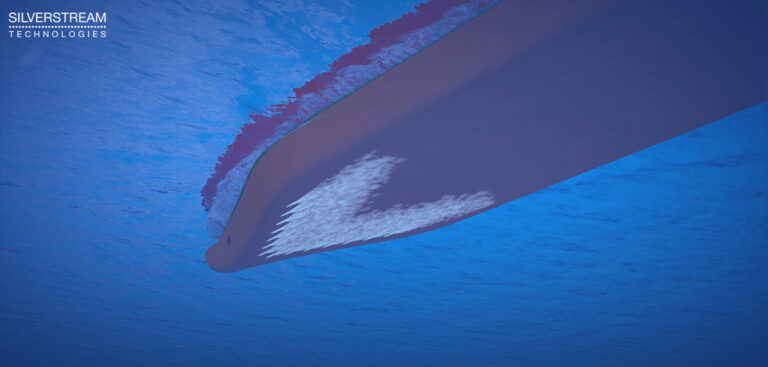The technology group Wärtsilä and leading air lubrication solution provider Silverstream Technologies have announced the signing of a Licence and Co-operation Agreement for future sales and servicing of the Silverstream System. As an authorized sales and service partner, Wärtsilä intends to fully integrate Silverstream’s air lubrication system within its propulsion solutions.
The Silverstream System creates a carpet of microbubbles that coat the entire flat bottom of the vessel. This carpet reduces frictional resistance between the hull and the water, dramatically reducing fuel consumption and related emissions. The technology works in all maritime conditions, is not weather dependent, and does not constrain or negatively impact the normal operational profile of the vessel.
“At Wärtsilä we are committed to fully supporting our customers as they strive to reduce operating costs and improve the environmental sustainability impact of their operations,” said Lars Anderson, director, propulsion, Wärtsilä Marine. “[This] agreement enables us to facilitate the building of better vessels that meet tomorrow’s challenges today, and Silverstream are the ideal partners to help us realise this goal.”
This new collaborative partnership will accelerate the deployment of air lubrication systems across all vessel classes, from small bulk vessels to the largest container ships. By combining Wärtsilä’s propulsion expertise and Silverstream’s innovative engineering knowledge, access to this clean technology will be facilitated across the market.
“[This] agreement with Wärtsilä reinforces our position as the shipping industry’s leading clean technology manufacturer,” said Noah Silberschmidt, CEO, Silverstream Technologies. “In Wärtsilä we find a partner as committed as we are to achieve a cleaner, more efficient and sustainable maritime industry.”
The agreement means that more shipowners will have easy access to Silverstream’s proven air lubrication technology. The system has been proven to reduce fuel burn and associated emissions by 5% to 10%, depending on vessel type.



